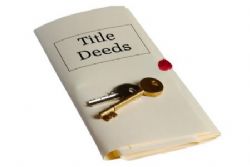A common mistake made by foreign buyers of Spanish property is that of assuming that any purchasing procedures and legal formalities associated with any such sale are the same as in their own country.

Worse still, there is so much conflicting information on the subject of buying a property – much of it from well meaning but unqualified sources – that it is difficult to understand when a property has no hidden surprises.
We asked Spanish Tax Specialists, Abaco Connect ,how potential buyers may be able to conduct a background check on any property that was of interest to them :
The Spanish Land Registry has now started to provide English language translations of the ‘nota simple’. This means that you can now access some essential information about a property that you may be interested in before buying. However, it is still important to use the services of a qualified and experienced lawyer.
The Spanish legal and Spanish tax system can seem to work very differently from that of other countries when it comes to taking into account any debts held against property. Cars and houses can have outstanding fines and tax to pay held against them rather than the person who owns them. So for example, you might discover that a second hand car that you want to buy has some outstanding fines registered and the house you’d like to purchase has Spanish IBI (council tax) due to be paid.
This is why it is so important that you have any potential purchases checked first before you buy. By hiring a good conveyancing lawyer when buying a house or involving a gestoria when buying a car you help to protect yourself against any of the skeletons that might be in the closet of your intended purchase.
A new initiative is making it easier for you to do a little investigative work on your own behalf. Potential purchasers of property are now able to access official records in English. The Spanish Land Registry are inviting us to submit a request for a ‘Land registry extract’ or ‘nota simple’ to find out if there are any charges held against property. The nota simple gives the details of any outstanding mortgages and debts there might be - essential information for anyone considering a purchase.
If you go on the interactive land registry site at https://buyingahouse.registradores.org/ you will find the instructions for submitting a request. It costs 29€ plus VAT and usually takes two days to complete. There is an example on the website to help you understand the document when you receive it.
The information you’ll be given includes:
• A description of the property - physical features such as boundaries, floors, surface area
• If it is part of a community of owners
• Who owns it and their identification
• Mortgages and any loans held against the property
• Any outstanding Spanish taxes or debts held against the property
Of course, if you use a lawyer to purchase and complete on a property they will access this information for you as part of their service. It is important to remember that the nota simple will not include all the information you may need to know and this is where a good, reputable lawyer is essential.
The advantage to the new system is that you can see information for yourself in your native language. Perhaps more importantly, it signifies a step forward by the Spanish Government in recognising some of the difficulties there have been with property purchase in Spain.










